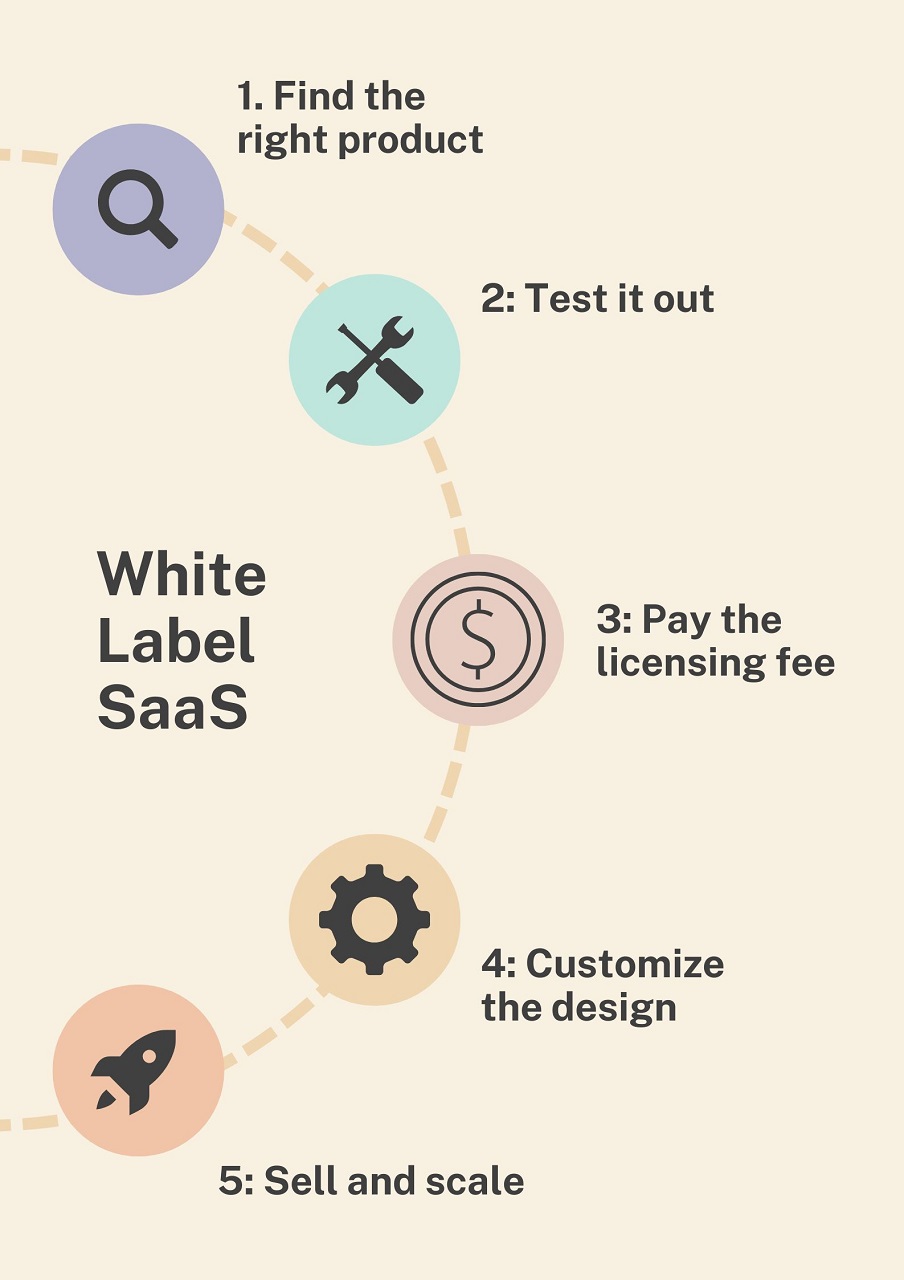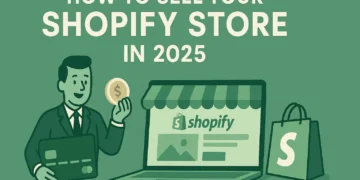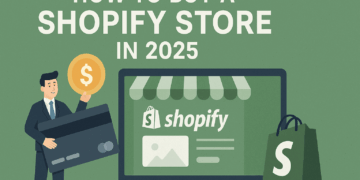Do you know you can start a software business without any of the tech stuff and the costs involved? Well, you can actually sell other people’s software with your name on it; even if you don’t know anything about software development. It’s called White Label SaaS and today, we are going to learn about it.
What is White Label SaaS?
White Label SaaS is when a company creates software that another business can rebrand and sell as their own.
Think of it like buying a plain product from a manufacturer and slapping your logo on it. The original creator stays in the background while you, the reseller, get all the glory. From marketing tools to e-commerce platforms, the possibilities are endless.
Types of White Label SaaS
White-label SaaS comes in various forms. Here are some of the most popular types to consider:
- Email Marketing: Managing email campaigns is critical, and white-label email marketing software can help. It allows you to automate sequences, design custom dashboards, and brand everything as your own. HubSpot, for instance, offers white-label options through their Partner Network, letting you resell email marketing tools with access to support and even publishing opportunities on their blog.
- E-commerce Platforms: Building an entire e-commerce platform can cost a fortune. Instead, many agencies use white-label SaaS to help their clients run online businesses. Big names like Shopify and Magento let you resell their services under your brand, making it easy to offer ready-made e-commerce solutions.
- CRM software: A solid customer relationship is key to business success, which is why many agencies are jumping on white-label CRM (Customer Relationship Management) software. GreenRope and AllClients are popular choices, providing tools for companies to manage their client relationships efficiently.
- Social media management software: Managing multiple social media accounts can be exhausting. White-label social media tools allow agencies to automate posts, comments, and engagement without building their system from scratch. It’s an easy way to offer social media services under your brand.
- SEO and SEM management: Search engine optimization (SEO) is time-consuming, so many businesses prefer outsourcing it. White-label SEO management software lets companies offer SEO services to clients without needing to master the tech. Platforms like Serpstat provide tools that help you rebrand and resell SEO and search engine marketing (SEM) services.
What is white label SaaS side hustle?
As we discussed earlier, a white-label SaaS side hustle is when someone sells software that’s been created by another company but branded as their own. It’s a great way for people to start their businesses without building software from scratch.
You can sell the software as if it’s yours. This way, you can focus on branding and marketing rather than designing and developing a new product.
Another great side hustle for people good with marketing and SEO is website flipping.
What is the difference between white-label and private-label SaaS?
White-label SaaS platforms are built and owned by one company, but they’re licensed out to other businesses, who can then add their branding to make it feel like their own.
Private label SaaS, on the other hand, is developed specifically for one customer from the ground up. This customer has full control over the product, including its features and branding, making it truly unique to their business.
What are the benefits of white-label SaaS?
White-label SaaS offers many benefits:
- It saves you time and money because you don’t have to build the software yourself.
- You can also launch your business quickly since the product is ready.
- It provides a steady income stream through subscription models.
- You can brand the software as you wish, to reflect your product’s uniqueness.
Get the best price for your business — we take care of the rest.
Start Selling for FreeHow Does White Labeling Work for SaaS Products?
Here’s how the white labeling process works:
Step 1: Find the right product
Start by choosing a product to resell. If you want to offer an email marketing tool, look for developers who offer white-label options. Make sure the software aligns with what you plan to offer your customers.
Step 2: Test it out
Before diving in, make sure to try the product yourself. Many providers offer free trials or demos. Some may even charge a small fee for access to a prototype, but it’s worth it to ensure the software works as promised.
Step 3: Pay the licensing fee
Most white-label SaaS providers charge a licensing fee, either monthly or annually. This fee gives you the right to rebrand and resell the product under your business name.
Step 4: Customize the design
Once you’ve got the product, it’s time to make it truly yours. Add your logo, adjust the color scheme, and tailor the interface to match your brand identity. This makes it look like the product was made just for you!
Step 5: Sell and scale
Now that the product looks like your own, it’s time to hit the market. You can resell it directly to clients or use it to boost your own sales efforts.

Receive an instant valuation with our Ecommerce Business Valuation Tool.
Get My ValuationIs White-Labeling SaaS Software Really Profitable?
Yes, it is. According to Starter Story, some successful white labelers report earning up to $1.2M per year.
The global Software as a Service (SaaS) market was valued at USD 314.54 billion in 2023. It jumped to USD 358.33 billion in 2024 and is projected to soar to approximately USD 1,251.35 billion by 2034. That’s a remarkable growth rate of 13.3% annually from 2024 to 2034.
If those numbers catch your attention, then white-label SaaS could be the perfect side hustle for you. And one with great prospects.
But, like any business, how much you earn depends on your understanding of the product you are reselling, how much value you add to the product, and how well you build relationships with your customers
You’ll need patience too. After your initial investment, it might take a few months before you start seeing real gains.
With consistency, I’ve seen white-label entrepreneurs turn software reselling into gold.
There are two main ways to make money with white-label SaaS:
- Markup on subscription: You buy the software at a low price from the developers and sell it to your customers at a markup. It’s that straightforward; you keep the difference between the buying price and the selling price as your profit.
- Commission per signup: Some developers pay you a commission for every customer you bring in. So, the more signups you direct in, the more you earn.
While the profit-per-product might seem small at first, the more customers you sign up, the more the numbers add up.
If your SaaS provider offers discounts for bulk purchases, that’s another avenue to earn. You can boost your earnings by providing additional services, too.
The truth is, there’s no cap on how much you can make from white-label SaaS. Your success comes down to:
- Choosing the right product
- Understanding your customers’ needs
- Delivering unique value
- Prioritizing customer satisfaction
In the end, white-label SaaS reselling can be a highly profitable venture. There;s no limit to how much you can earn.
Our AI recommends the best listings based on your investment profile.
Discover MilesBut white-label SaaS has a few Pitfalls
Like any business model, white-label SaaS has its challenges. Here are a few common setbacks that resellers face:
- High initial costs: Though you don’t have to worry about developing the product, there are still upfront fees to get started. These costs could include marketing expenses, licensing fees, or even purchasing the product for resale. Depending on the vendor, these fees can add up quickly, so it’s important to budget for them from the start.
- You’re not in full control: Since you’re not involved in developing the software, you don’t have control over its quality. This is why it’s crucial to do your homework and choose a reliable SaaS vendor. Settling for a vendor with low-quality solutions is one of the fastest ways to ruin your business. Make sure the product meets your standards before you start selling it.
- Customer support responsibilities: Any issues your buyers have with the software will fall on you. This means you need to be prepared to handle customer support. To manage this, pick a trusted developer and take the time to fully understand the product inside and out. Regular communication with the vendor will also help you provide better support to your customers if they run into problems.
- High-risk market: The big question here is: what if you don’t get as many buyers as you hoped? SaaS markets can be unpredictable. Trends shift fast. What works today might be out of style tomorrow. Being adaptable and staying updated with market trends will help you navigate these risks.
Takeaways
This model of white labeling SaaS can be great for non-tech entrepreneurs looking for a profitable side hustle in the tech market. Just remember, the key to success lies in choosing the right product, understanding your customers, and delivering excellent value.





